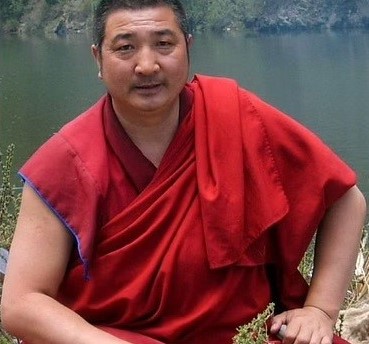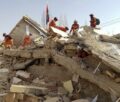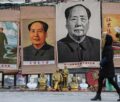Tibetan leader, Jigme Gyatso died


Jigme Gyatso, who campaigned for Tibetan rights and faced multiple detentions, is dead.
The 56- year -old had been seriously ill since his release in October 2016 after a five-year jail term. He was hospitalized with health complications in Xiling in May, passed away on July 2, according International Campaign for Tibet (ICT), a Washington-based advocacy group.
Jigme is known for his defiant video testimony in 2008 that was shot in Tibet, exposing the Chinese government’s oppression in Tibet, says a report in Beijing News Net. He provided a detailed account of the cruel methods Chinese security forces use to oppress the Tibetans, and elaborated on the torture methods used on him and other Tibetans. His video presented an account of the conditions in detention centers
Jigme’s death is part of a pattern of custodial torture and mistreatment in Tibet, added ICT. It had documented as many some 30 such cases. Tibetan monk Choekyi died in May 2020 after torture in custody. The same year in August, Lhamo, a 36-year-old mother of three died in custody after apparent beatings.
“Owing to torture and other cruel and inhumane treatment during his detentions, Jigme Gyatso’s conditions had become unrecoverably complicated He was suffering from diabetes, hypertension, and heart, liver and eye diseases but he was denied medical parole. Low-quality health care provided to him during his incarceration, and his inability to access professional private care made Jigme’s health deteriorate steadily over the years,” the ICT said.
Jigme Gyatso did not take part in the March 2008 mass protests in the town of Labrang. When protestors were crowding the streets, he was waiting on the street near his monastery for his shoes to be repaired. Yet, he was dragged into a white van by four security personnel, and another round of detention started. It was on his release the by-now his famous video testimony to “give a first-hand account of the Chinese government’s oppression in Tibet”.
………….
-
Book Shelf
-
 Book Review
DESTINY OF A DYSFUNCTIONAL NUCLEAR STATE
Book Review
DESTINY OF A DYSFUNCTIONAL NUCLEAR STATE
- Book ReviewChina FO Presser Where is the fountainhead of jihad?
- Book ReviewNews Pak Syndrome bedevils Indo-Bangla ties
- Book Review Understanding Vedic Equality….: Book Review
- Book Review Buddhism Made Easy: Book Review
- Book ReviewNews Elegant Summary Of Krishnamurti’s teachings
- Book Review Review: Perspectives: The Timeless Way of Wisdom
- Book ReviewNews Rituals too a world of Rhythm
- Book Review Marx After Marxism
- Book Review John Updike’s Terrorist – a review
-
-
Recent Top Post
-
 NewsTop Story
What Would “Total Victory” Mean in Gaza?
NewsTop Story
What Would “Total Victory” Mean in Gaza?
-
 CommentariesTop Story
The Occupation of Territory in War
CommentariesTop Story
The Occupation of Territory in War
-
 CommentariesTop Story
Pakistan: Infighting in ruling elite intensifies following shock election result
CommentariesTop Story
Pakistan: Infighting in ruling elite intensifies following shock election result
-
 CommentariesTop Story
Proforma Polls in Pakistan Today
CommentariesTop Story
Proforma Polls in Pakistan Today
-
 CommentariesTop Story
Global South Dithering Away from BRI
CommentariesTop Story
Global South Dithering Away from BRI
-
 News
Meherabad beckons….
News
Meherabad beckons….
-
 CommentariesTop Story
Hong Kong court liquidates failed Chinese property giant
CommentariesTop Story
Hong Kong court liquidates failed Chinese property giant
-
 CommentariesTop Story
China’s stock market fall sounds alarm bells
CommentariesTop Story
China’s stock market fall sounds alarm bells
-
 Commentaries
Middle East: Opportunity for the US
Commentaries
Middle East: Opportunity for the US
-
 Commentaries
India – Maldives Relations Nosedive
Commentaries
India – Maldives Relations Nosedive
-
AdSense code



















